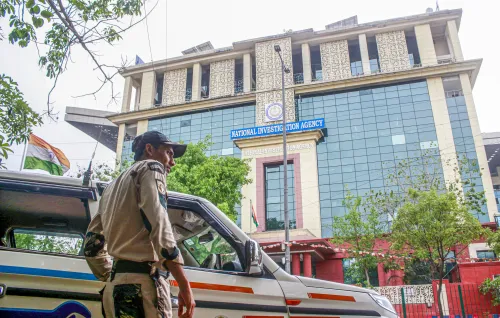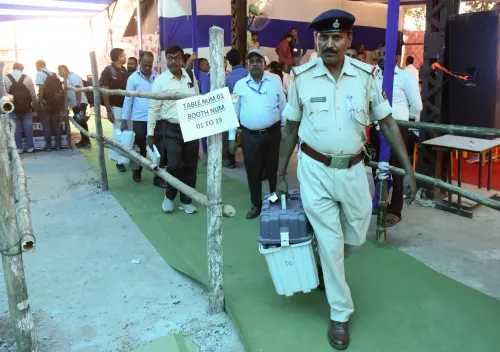Will the ISRO-NASA Earth Observation Satellite Launch on July 30th?

Synopsis
Key Takeaways
- ISRO and NASA collaboration for Earth Observation.
- Launch on July 30 aboard GSLV-F16.
- Satellite operates 24/7, even in adverse weather.
- Supports disaster management and climate monitoring.
- Future missions include Gaganyaan and Chandrayaan.
Chennai, July 28 (NationPress) The Earth Observation Satellite, collaboratively developed by ISRO and NASA, is set for a launch into space on July 30 aboard India’s GSLV-F16 rocket, as announced by ISRO Chairman Dr. V Narayanan today.
During a press conference at Chennai International Airport, Dr. Narayanan revealed that the satellite will be positioned in orbit at an altitude of 740 km and is outfitted with cutting-edge radar imaging technology.
“This pioneering satellite can capture images of our planet around the clock, even through cloud cover and rain. It will be vital for detecting landslides, aiding disaster management, and monitoring climate change. The advantages will extend not just to India and the United States, but to the global community at large,” he noted.
In updates on other significant missions, the ISRO Chairman indicated that the Aditya-L1 solar satellite, launched earlier with a 1.5 kg payload, has started transmitting solar research data. Scientists are currently evaluating this data for more profound insights into solar activity.
Regarding the eagerly awaited Gaganyaan human spaceflight mission, Dr. Narayanan stated that three uncrewed test missions are scheduled before astronauts will be launched into space.
“The first vehicle is being prepared at Sriharikota and is set to launch this December with a humanoid payload. If successful, two additional missions will follow next year. The inaugural manned mission is planned for March 2027, as confirmed by the Prime Minister,” he added.
Dr. Narayanan also provided updates on India’s forthcoming lunar missions, expressing confidence that Chandrayaan-4, aimed at landing on the Moon and retrieving soil samples, will be successful. “This mission will represent a major milestone for ISRO in lunar exploration,” he stated.
Furthermore, he mentioned that Chandrayaan-5, a collaborative mission with Japan, is anticipated to function for 100 days on the Moon. Currently, ISRO oversees 55 satellites and is working on categorizing them into three groups over the next four years.
Dr. Narayanan emphasized that ISRO’s research has a national focus and is not customized for specific states. “Our priority is to address the needs of the populace, regardless of the region,” he asserted.









